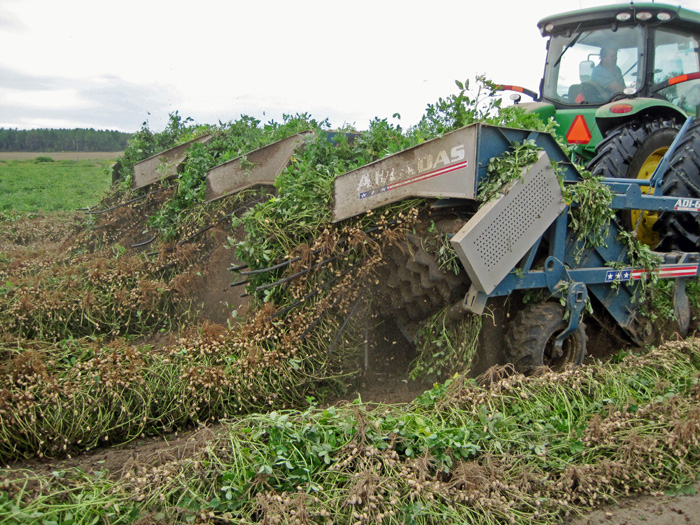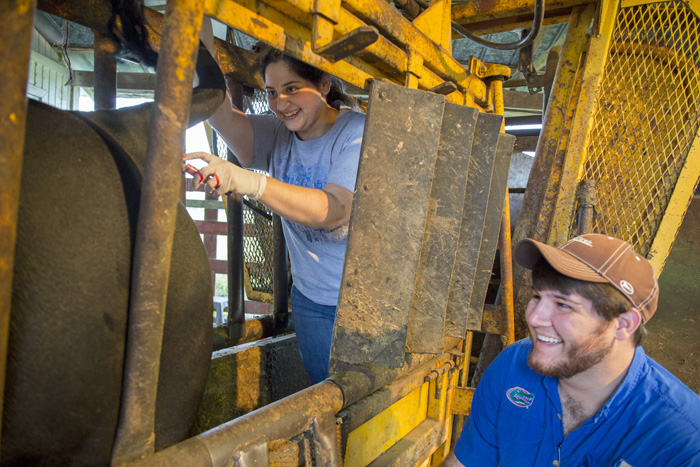
Florida’s 47,000 farms are already vital economic engines that boost the economy in ways that go beyond putting food on consumer’s plates. Agriculture’s resiliency makes it a mainstay of Florida’s economy. When money gets tight, fewer people book hotel rooms or buy theme park tickets, but they don’t stop eating. Photo credit: Doug Mayo
Jack Payne, UF/IFAS Senior Vice President
These past few weeks I have spent much time traveling around Florida attending the annual meetings of some of our important agricultural commodity groups, such as Citrus Mutual, the Florida Cattlemen’s Association and the Florida Nursery, Growers and Landscape Association. Participating in these meetings is a great reminder of the value of production agriculture to our state, especially to our quality of life. More than 1,000 people a day are moving here, and we pave over many farms to make way for their subdivisions. Yet the new supermarkets that pop up to feed these newcomers all contain aisle upon aisle of Florida-produced food.
Yes, that’s more food from less land. That productivity boost relies on a thriving innovation economy and a network of field-to-fork industries that make the Sunshine State one of the world’s leading agricultural hubs. This success story is led by a strong commissioner of agriculture, with science and innovation provided by the University of Florida, the state’s land-grant university, and a supportive collection of commodity and stakeholder groups. In addition to keeping you well fed, it’s an economic boon. We can start with the 2.2 million jobs linked to Florida agriculture, nearly a fifth of all the jobs in the state.
Unless we stop eating, Florida agriculture has no choice but to grow. The state’s population is expected to increase by nearly 14 million by 2070. At the University of Florida’s Institute of Food and Agricultural Sciences, we’ve seen challenges to food production such as the disease that threatens our citrus industry. We also see tremendous opportunity to meet those challenges through teaching, research and outreach.
Young people are beginning to see it too, as a new generation of idealists fills our colleges and universities. They aspire to feed the world through careers in science and technology. They see careers in biology, genetics, engineering, computer science and many other scientific and technological fields as the way to contribute to solutions. We have an all-time high enrollment at the UF/IFAS College of Agricultural and Life Sciences this year. Food security is a global issue. Thousands of students see the challenge of feeding a projected 10 billion people in 2050 as an opportunity to do good while doing well.
That challenge offers the potential for an even greater economic future for Florida. Why shouldn’t we have the agricultural equivalent of Silicon Valley? Who better than us to create a concentration of start-ups, laboratories and research centers to innovate better ways to produce food? Florida agriculture, natural resources and food industries already drive $59 billion in exports. They have a total state economic impact of $127 billion, more than 14 percent of our state economic output.
These numbers consider the ag and food system as a whole. A tomato in the field is nothing without a distributor and grocer. A plant in the greenhouse will languish without a landscaper or garden center. The meat from a healthy cow is wasted without a burger joint. Field and greenhouse agriculture is a small proportion of the whole, but it is the base of the ag and food system pyramid. The entire food system collapses without agriculture.
There are lots of ways to harvest statistics, of course, but there’s no denying that our state’s 47,000 farms are already vital economic engines that help you in ways that go beyond putting food on your plate. They keep your tractor sales force in business. They keep a whole array of juicing, canning and other processing plants running. They fill trucks to ship produce but they also fill them before a seed is even in the ground, bringing in the supplies and equipment necessary to grow thousands of acres of food at a time.
There are some communities where agriculture is such a large part of the tax base that failed farms could very well translate into the layoffs of librarians, teachers and police. Agriculture’s resiliency makes it a mainstay of our economy. When money gets tight, fewer people book hotel rooms or buy theme park tickets. They don’t stop eating.
The latest challenges do not spell doom for the Florida farmer. They’re calls for us to lead the way in sustainable agriculture. Money may not grow on trees, but it grows in the forests that our tree farmers harvest. It grows on the bottom of the sea, where our clam farmers produce some of the most delicious seafood you’ll ever taste. Our fields of green — tomatoes, watermelon, peanuts and yes, oranges — put green in the wallets of millions of Floridians.
There are indeed serious challenges to food production here. I just don’t believe the naysayers who say Florida agriculture is in decline. I see the story on your supermarket shelves, on your restaurant menus, and in your farmers’ markets. I see it in farmers using technology to produce more food than ever. I see it in students preparing to dedicate the next 40 years to food production.
That story is that growing food in Florida means growing prosperity!
- Agriculture:A Minor Miracle Going on in Florida - June 30, 2017
- Memorial Day - May 25, 2017
- Growing Pasture Under Shade a Challenging Mix - July 19, 2013

